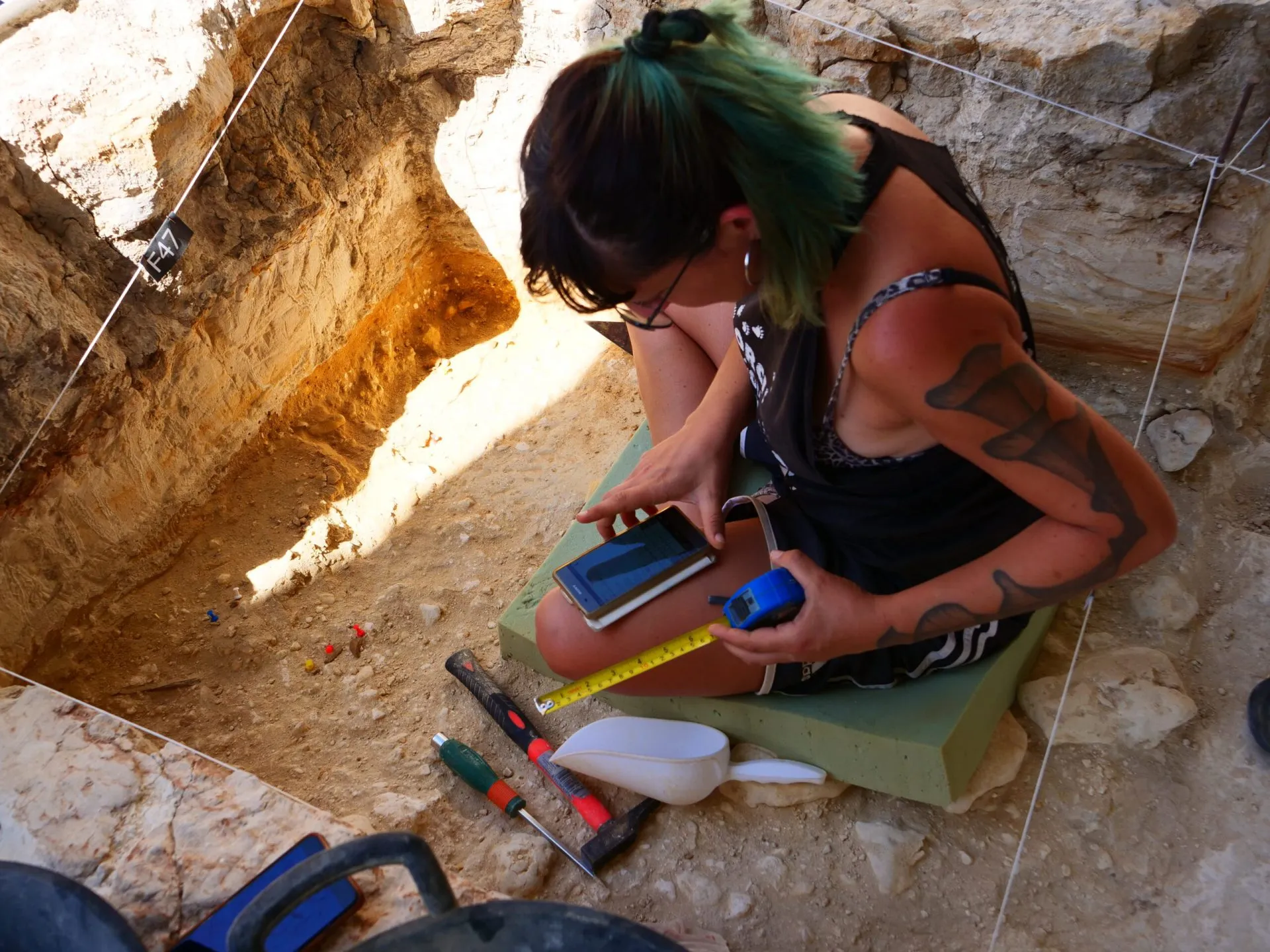Located in the north-eastern sector of the Guadix-Baza basin, in the foothills of the Sierra de la Umbría, the 1.4 million year old site of Barranco León de Orce is known for its exceptional and rich archaeological collection, which currently contains some 2,500 objects made from limestone and flint from the area.
The site has also yielded an abundant palaeontological record including herbivores and carnivores, numerous microvertebrate remains and even a hominin molar that is currently the oldest human fossil in Western Europe. In this context, the presence of both undisturbed and eroded lithic artefacts and faunal remains had baffled researchers for decades.
Now, after many years of meticulous excavation campaigns, exhaustive lithic analysis and painstaking geological studies, it has been discovered that, after a period of intense rainfall, Barranco León became a stone quarry: a real quarry that was used by the first populations of the European continent. This research, led by Stefania Titton, who has just completed her PhD in Quaternary and Prehistory at the Rovira i Virgili University (URV) and the Catalan Institute of Human Palaeoecology and Social Evolution (IPHES-CERCA), and is funded by a postgraduate training grant from the Autonomous Province of Bolzano (Italy), proposes an unprecedented behaviour of our most remote ancestors. The highly significant results have just been published in the journal Archaeological and Anthropological Sciences.

This research is part of the Orce Project, directed by Juan Manuel Jiménez Arenas, lecturer in the Department of Prehistory and Archaeology at the University of Granada, and which includes Deborah Barsky, researcher at IPHES-CERCA and associate professor at the URV, and Hugues-Alexandre Blain, researcher at IPHES-CERCA.
A box of surprises
Research carried out over time has led to the conclusion that in Barranco León, at first, there was a source of fresh water from the subsoil that attracted the abundant fauna that inhabited this corner of the province of Granada 1.4 million years ago. It was then that a catastrophic event became an opportunity: the torrential rains suffered by the first inhabitants of Orce accumulated the stones and bones that the water found on its way; among the former, numerous limestone pebbles and some fragments of flint that had formed over millions of years in the Sierra de la Umbría. All this formed a pavement similar to what we see today in many riverbeds.
When the calm came and the waters receded, Barranco León had become a quarry that was used and exploited by humans. This site, initially formed with eroded materials from other places, became a workshop where they made multiple tools that were used to process vegetables and animals, mainly for the subsistence of our ancestors.
The presence of freshwater springs coming from the subsoil in the same area as the quarry turned Barranco León into a watering place where herbivores could quench their thirst, but where they would also fall prey to their predators, as the hominids, with their newly made tools, would consume them.
Looking for the needle in the haystack
The study now presented has its roots when the Orce research team observed among the 2,500 stone elements provided by the Barranco León site, a few that caught their attention because they came from a single block of flint and from the same limestone pebble. So they undertook a study that was like finding the needle in a haystack. The lithic technology section reached this milestone and has reconstructed the puzzle with reassemblages, i.e. putting together fragments of stones that fit together.
In order to give more consistency to the study, a spatial analysis was carried out for the first time, which has made it possible to follow the trail of the people who created them and it has been possible to demonstrate, without a doubt, that humans carried out multiple activities in Barranco León. After this moment of effervescence, human activity declined until it disappeared, shifting and focusing on Fuente Nueva 3, another Olduvayan site in Orce, which is located a few kilometres from Barranco León.
The research, funded by the Junta de Andalucía, has been carried out by a transdisciplinary team in which, in addition to the aforementioned staff, three members of IPHES-CERCA have also taken part: Amèlia Bargalló, Juan de la Cierva postdoctoral researcher at the Ministry of Science, Innovation and Universities; Christian Sánchez-Bandera, beneficiary of a predoctoral grant from the María de Maeztu programme, and Robert Sala Ramos, director of this research centre and full professor of Prehistory at the URV; Oriol Oms professor at the Autonomous University of Barcelona; José A. Solano from the University of Seville; José Yravedra from the Complutense University; Isidro Toro-Moyano, from the Provincial Archaeological Museum of Granada and Alexia Serrano-Ramos and Juan Manuel Jiménez Arenas from the University of Granada.


